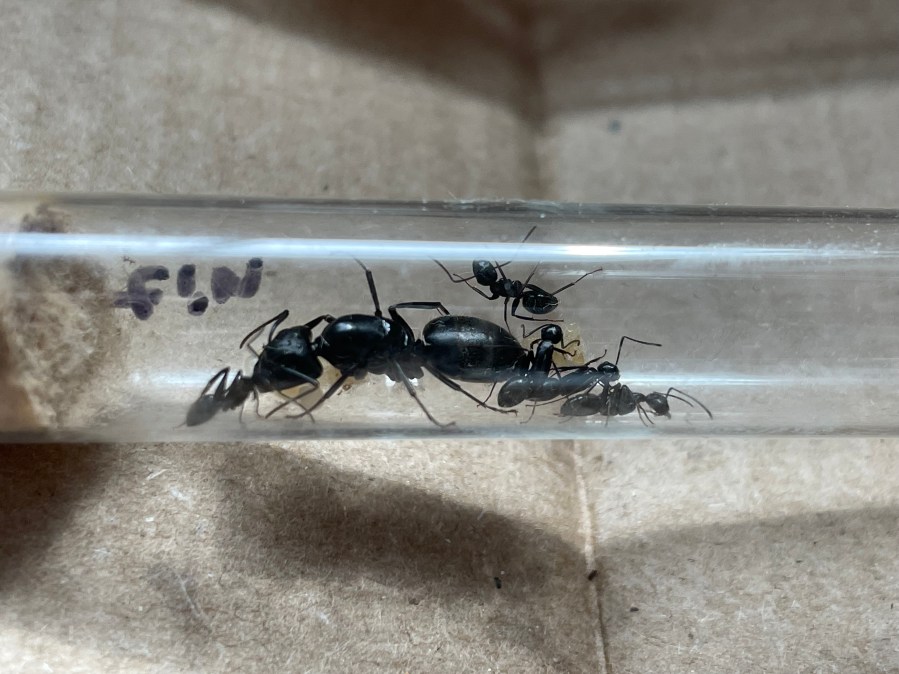VIRGINIA BEACH, Va. (WAVY) — This week’s warm temperatures had insects swarming the beach at the Virginia Beach Oceanfront, leaving vacationer Jonathan McNamara wondering what it was all about.
“They are all over the entire beach,” said McNamara, who reached out to WAVY on Wednesday afternoon to get an ID on the pesky critters.
It turns out they were carpenter ants, the largest in all of North America — at the beginning of mating season.
“This is probably the first time I have ever heard [carpenter ant] queens [mating by the beach], this is the first I have heard that,” said Scotty Yang, an assistant professor at Virginia Tech focusing on insect microbial interactions. “But this could have something to do with the direction of the wind.”
Yang, who’s studied carpenter ants at his lab in Blacksburg, says the conditions were perfect on Wednesday in Hampton Roads for the ants to fly to the Oceanfront, and do their thing.

“There are few components for them to kinda take as a cue to initiate mating flight: it has to very humid, hot, you need to have a good rain and it cannot be too windy … I checked the weather, I was like ‘OK April 5, there’s a bump in temperature, like 80-something’ … that’s perfect conditions for them to fly.”
Wednesday saw a high pressure system off the coast and low pressure system inland, allowing the carpenter ants the lift to fly up into the atmosphere and travel several miles. This time it happened to be toward a fairly crowded Oceanfront beach in early April.
Where were the ants before? Just hanging out locally, maybe in your neighborhood, Yang says. Carpenter ants will bite through wood to create nests, but unlike termites, they don’t actually eat the wood.
“Their nests are pretty cryptic. If you don’t go through enough logs, if you don’t go through enough wood, you won’t be able to find their nests.”
The ants will now likely stick around the Oceanfront after the mating process. Because the queen ants, which lay the eggs, shed their wings before they mate.
As for the males, they say sayonara.
“After mating, males die, what a tragedy,” said a chuckling Yang. He added that males have much smaller heads than worker and female ants, and much bigger eyes “because they need good vision to locate their lovers.”

“Each male has one chance and they die … we don’t want to be a male ant,” Yang joked.
So does this have any impact on beachgoers? Outside of being a general pain, they are not aggressive, Yang says.
“They are not like fire ants, those sting and bite, but for carpenter ants if you mess with them they could bite, but usually they just run away. They get scared.”
Carpenter ants — (mostly) lovers, not fighters.
























































